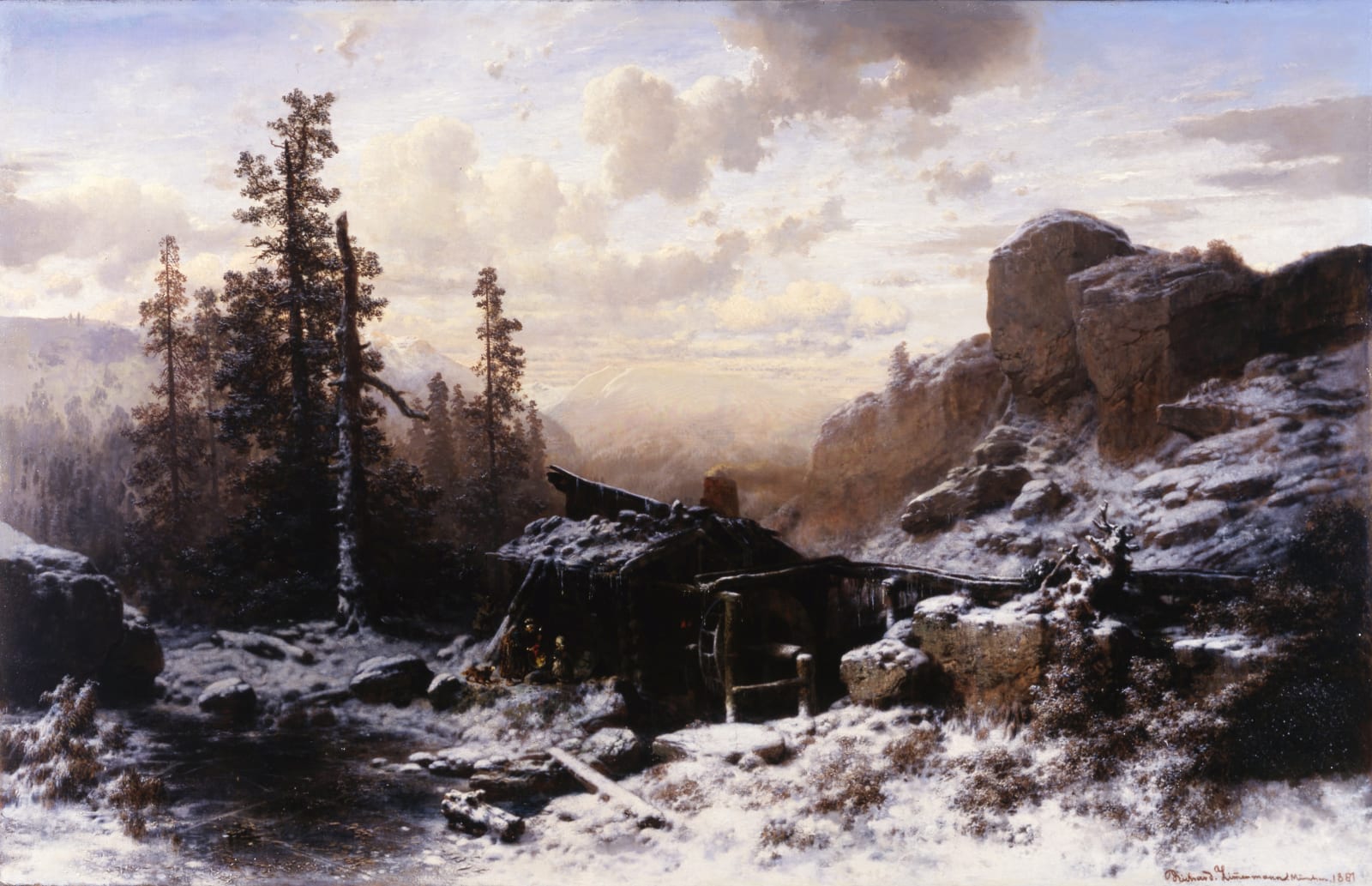Richard Zimmermann
Richard Zimmermann (1820-1875)
"Winter Landscape"
Oil on canvas
signed, dated and inscribed München 1861
107 x 170 cm.
August Richard Zimmermann (known as Richard) achieved considerable acclaim as a landscape painter. He was born in Zittau, training at the Dresden Akademie under the portrait and historical painter, Gustav Karl Ludwig Richter. In 1838 he travelled to Munich where he received further training from his brother, Albert Zimmermann (1808-1888). The elder was known for his naturalistic landscapes, interestingly Albert tried to dissuade his brother from turning from historical subjects to landscapes. However Richard disregarded the advice and concentrated the rest of his career on portraying atmospheric views of the mountains and forests in winter and summer, village genre scenes and also sea and coastal views. During his later career he was influenced by the work of the seventeenth century Dutch artist Bercham, whose landscapes often included architectural ruins, animal and figure groups.
From 1860 Zimmermann spent most of his summers painting in Eberfing near Weilheim or beside Lake Ammersee. He then spent the winter months painting fine snowy landscapes. He was particularly interested in studying differing mountain landscapes and also made a number of studies of geological formations. Toward the end of his career he ran into financial difficulties and thus found employment for a year with a gilder in Prague. He also spent time working as a watercolourist in Albert's Munich studio. Despite his less illustrious end, he achieved considerable repute, which is confirmed by the large number of museums who own in his work. They include the museums of Breslau, Leipzig, Dresden, Mannheim, Nürnberg, Gorlitz, Bautzen and the Neu Pinakothek in Munich. Other examples are housed at the Statsgallerie, Prague and the Museum Revoltella, Triest.
